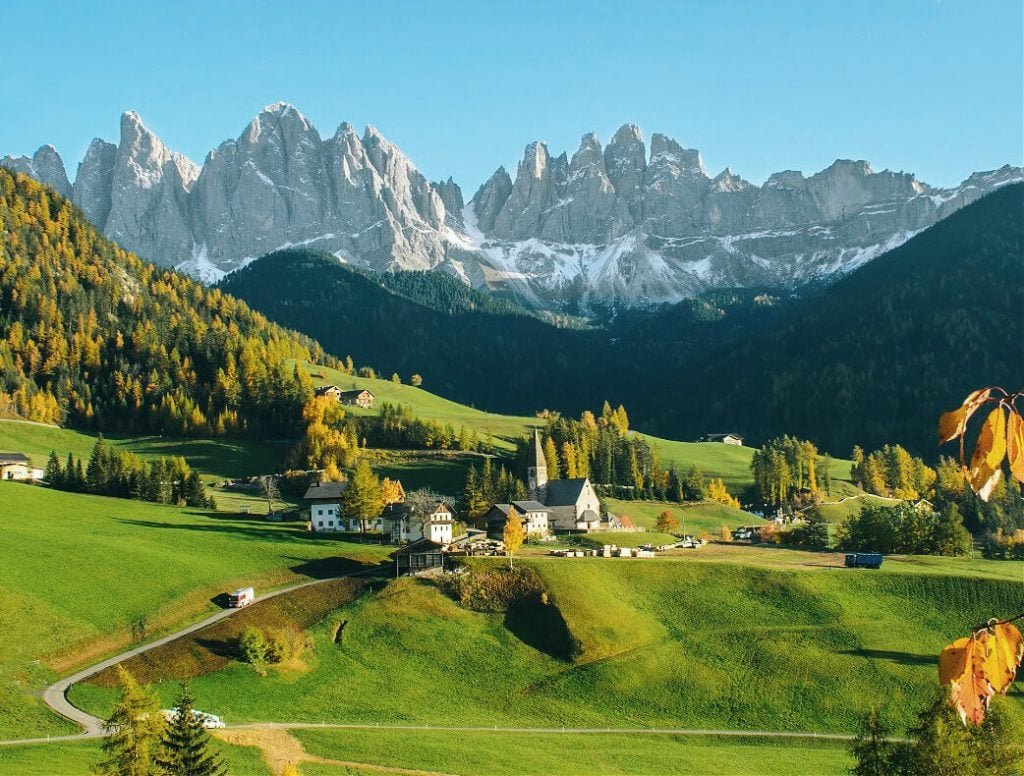TYROL: A TAPESTRY OF CULTURE & INFLUENCE

The Tyrol region, nestled in the heart of the Alps, has a rich and varied history that stretches back thousands of years. The name "Tyrol" first appeared in written records in the 12th century when the Counts of Tyrol, a noble family, began to consolidate power in the region. Throughout its history, Tyrol has been shaped by its rugged terrain, diverse cultures, and as a strategic location in the heart of Europe. Its story is a testament to the resilience and adaptability of the people who have called this region home for centuries.
During ancient times the area that is now Tyrol was inhabited by various Celtic tribes before the Roman Empire's expansion into the region around 15 BCE. The Romans established several settlements and roads, including the famous Via Claudia Augusta, which connected Italy with the Danube region and outskirts of the Black Forest in Germany. After the fall of the Western Roman Empire, the region came under the control of various Germanic tribes, including the Bavarians who recognized the areas’ strategic implications & significance from both a military and trading perspective. Attracted to the region for similar reasons, the Habsburg Dynasty ruled over much of the Tyrolean land during the late 14th century
With the advent of industrialization, Tyrol experiences significant economic and social changes many spurred by the military actions of World War I and World War II. Specifically, with implications to ripple forward throughout present day Central & Southern Europe, World War I saw the demarcation of the front line which ran between Austria-Hungary and Italy. After World War I, Tyrol was divided between Austria and Italy. The southern part, known as South Tyrol, became part of Italy, while the northern part remained with Austria. Despite the partition, Tyrol’s uniquely blended culture of Germanic and Italian sensibilities thereafter created a multi-ethnic and multi-lingual atmosphere that has become a vivid tapestry woven from distinct Northern and Southern threads.
Today the world recognizes Tyrol as an areas of stunning beauty the whole region of which is located in the Alps. As such, the underlying alpine setting has wholly influenced all manner of life & activity much of which is heavily focused upon skiing, hiking, and outdoor recreation. Permeating such a lifestyle have been distinctive wardrobes inclusive of traditional garb and impactful European taste that has consistently infiltrated 20th century menswear for decades.
Traditional Tyrolean clothing has often been informed by a culture that values practical, protective, and sturdy garments suitable to year-round alpine weather & related activities. Such comfort & performance demands, combined with a mix of Bavarian, Italian, and Austrian innovation has contributed to a unique style of garb. Thus, the Tyrol region's men's apparel reflects a blend of functionality, cultural identity, and aesthetic appeal, influencing both local and broader fashion trends on a global scale. As a primary set of characteristics permeating today’s menswear, early Tyrolean apparel was constructed with a strong workwear orientation designed to accommodate outdoor comfort, protection, and durability.
Categorically, shirting, knits, and coats of a natural fiber complexion are long-time staples of Tyrolean wardrobes. Within this outdoor culture, many products were designed from available natural sources plucked from the surrounding environment both grown and from livestock. For example, patchwork shirting with sturdy overlays was smart in both its optical presentation and general design allowing for collared expressions associated with the formality of Tyrol’s early 18th & 19th century dress codes. Furthermore, traditional Lederhosen and its combination of wool & leather initially served a hard wearing purpose associated with local agricultural activities while also offering ease of movement & versatility amidst travel from one hamlet to the next. Similarly knitwear was a staple of the region, as was Tyrol’s world-famous Loden Coat, all of which commanded a woolen origin shorn from sheep and which also included hefty socks. Such products were considered an essential due to the alpine orientation of Tyrol where even Spring climates could shift to cooler temperatures abruptly and most especially for those villages nearing the tree line at various altitudes.
Beyond craft and utility, hallmarks, of Tyrolean culture and garment design, worldwide sport & fashion trends have gravitated toward such products as much for their outdoor performance as the region’s heritage, nostalgic and diverse past, as well as its sense of timeless alpine tradition. Such roots and attributes have made Tyrol a treasure trove of inspiration for designers, sportsmen, and fashion enthusiasts alike while transmitting Tyrolean values from the Northern & Southern Alps to the runways of Paris, London, New York, Tokyo, and Milan.
A mix of North & South, Germanic-Austrian-and-Italian, the region of Tyrol is a unique European hub of peoples, settings, and tradition connected to life in the mountains. Established by long-forgotten royalty, Tyrol is a cross roads of individuals of varied backgrounds, ethnicities, and languages. A melting pot of influences has created a heterogenous place unique in the world and one which is simultaneously of ancient roots and whole heartedly contemporary. Less a clash of influences than a beautiful blend of elements such as East & West, Sea & Sky, and Past & Present, Tyrol paints the picture of a diverse mountain region revered for its rich alpine history diversity of centuries old multi-cultural influence.







